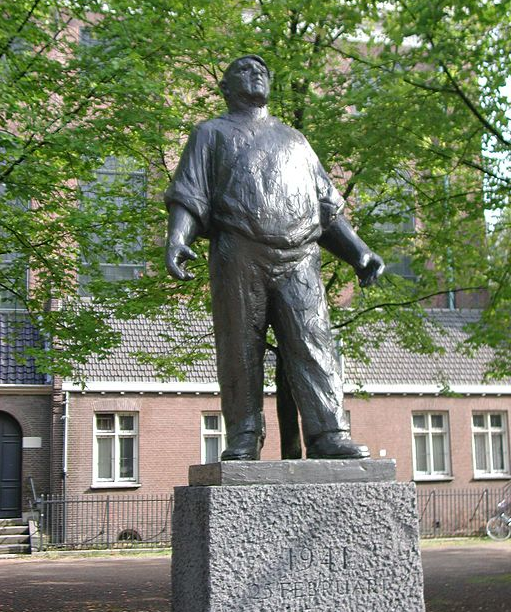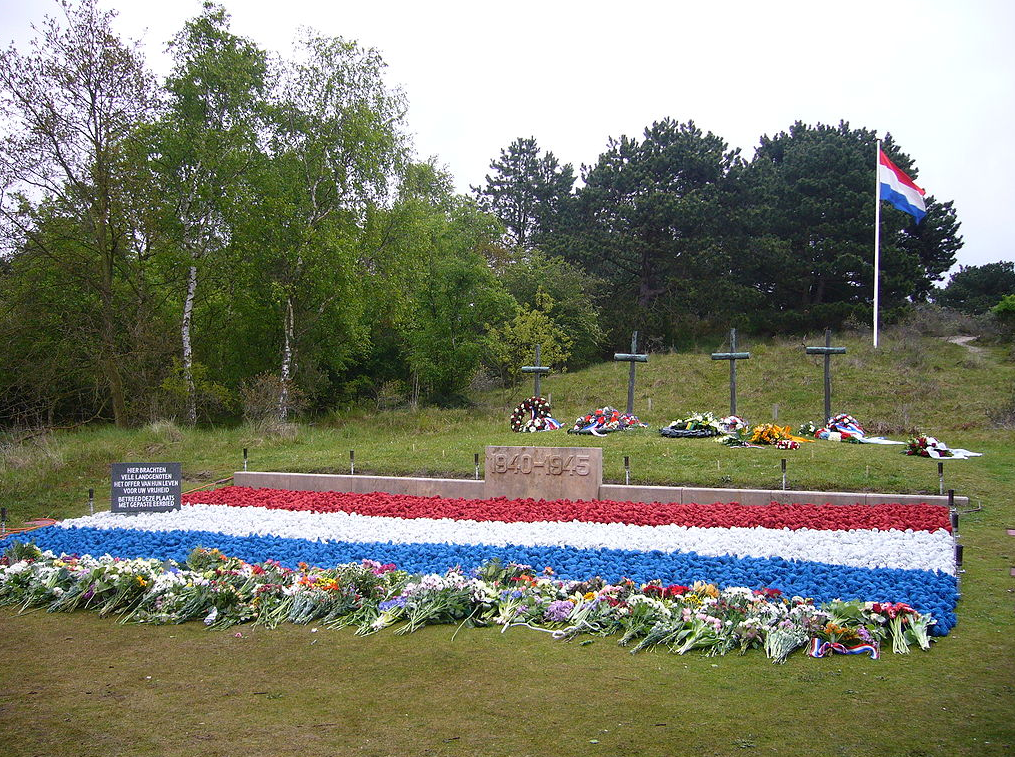75 years ago Amsterdammers went on strike to support the Jews

 It is 75 years ago this year that workers in Amsterdam and the surrounding areas went on strike in a protest against what was to be the beginning of the large-scale persecution of Jews in the Netherlands. The 1941 februaristaking, or February strike, is commemorated every year on February 25.
It is 75 years ago this year that workers in Amsterdam and the surrounding areas went on strike in a protest against what was to be the beginning of the large-scale persecution of Jews in the Netherlands. The 1941 februaristaking, or February strike, is commemorated every year on February 25.
What went before
On February 11, a member of the WA, a club of bully boys affiliated with the Dutch Nazi party NSB, was killed in a fight with Jewish and non-Jewish Amsterdammers who were standing up for the rights of terrorised Jewish citizens. Tension mounted and when, later that month, the German police raided Jewish ice parlour Koco they were met with a spurt of ammonia gas (used for refrigeration purposes). The German response was swift: on February 22 and 23, 425 Jewish men and boys were rounded up and deported to concentration camps Mauthousen and Buchenwald. Most perished there.
The strike
The Dutch communist party CPN was illegal at the time and from its ranks would come some of the most dogged resistance fighters. In this instance it issued a now historic pamphlet with the words Staakt!!! Staakt!!! Staakt!!!, an impassioned call for strike action ‘to show solidarity with the Jewish part of our society which has been hit so hard’. It was heeded en masse.
Day 1
On February 25 some 300,000 people downed tools in Amsterdam. Trams stood still, docks stood deserted, shops and offices closed and schools were empty of students. Civil servants, too, joined the strike. People took to the streets to demonstrate against the German regime.
Day 2
The next day the Zaanstreek, Kennemerland (Haarlem and Velsen), Hilversum, Utrecht and Weesp joined the strike. The 26th was also the day the Germans, who had been taken completely by surprise, retaliated. Clashes on the day left nine dead and 24 severely wounded.
The aftermath
Never before had there been a strike to protest against the treatment by the Germans against the Jews. Civil servants were fired and Amsterdam mayor Willem de Vlugt was forced to step down. Many were arrested and the city was ordered to pay a 15 million guilder fine.

Communists
The members of the CPN, already targeted by the Germans, were now even more at risk. At the end of February one of its members, 23 year-old Leendert Schijveschuurder, was arrested when he was putting up posters calling for a strike on March 6. He was sentenced to death and executed the next day, the first Dutch citizen to be shot by a German firing squad. Some time later, three other members of the Communist party were executed, along with 15 members of the Geuzen resistance movement on the Waalsdorpervlakte near Scheveningen in 1941. Many others were also to die in the same place.
The song of the 18 dead
The 18 executed men were honoured in a poem written by writer and resistance fighter Jan Campert, who died in concentration camp Neuengamme in 1943. This is the first stanza:
Een cel is maar twee meter lang
en nauw twee meter breed,
wel kleiner nog is het stuk grond,
dat ik nu nog niet weet,
maar waar ik naamloos rusten zal,
mijn makkers bovendien,
wij waren achttien in getal,
geen zal den avond zien.
A cell is only two metres long
And scarcely two metres wide,
Smaller still the plot of land
That I know not
but where I will rest, namelessly
and my comrades too
We were eighteen in all
None of us will live to see the night.
Jonas Daniël Meijerplein
The February strike is commemorated every year with a ceremony at the Dokwerker statue on the Jonas Daniël Meyerplein in Amsterdam, in the former Jewish quarter of Amsterdam. The square was renamed Houtmarkt in 1942 in a bid to eradicate Jewish street names. Jonas Daniël Meijer (1780-1834) was the first Jewish lawyer in the Netherlands. The square was the scene of the infamous raid on the Jewish community’s boys and men that preceded the strike.
The Dokwerker
The statue of the Dokwerker (the dock worker) with his hands about to turn into fists, was made by sculptor Mari Andriessen. The person who posed for the statue was builder Willem Termetz whom Andriessen knew from their days in the resistance movement. The statue was unveiled by queen Wilhelmina in 1952.
This year
The theme of this year’s commemoration of the February strike is Verander in de ander, or put yourself in their shoes. Former mayor Job Cohen will open a photo exhibition about the 1941 raid on the Jonas Daniël Meijerplein on February 21 at 5pm. A complete programme of activities surrounding the commemoration can be found here.
Thank you for donating to DutchNews.nl.
We could not provide the Dutch News service, and keep it free of charge, without the generous support of our readers. Your donations allow us to report on issues you tell us matter, and provide you with a summary of the most important Dutch news each day.
Make a donation